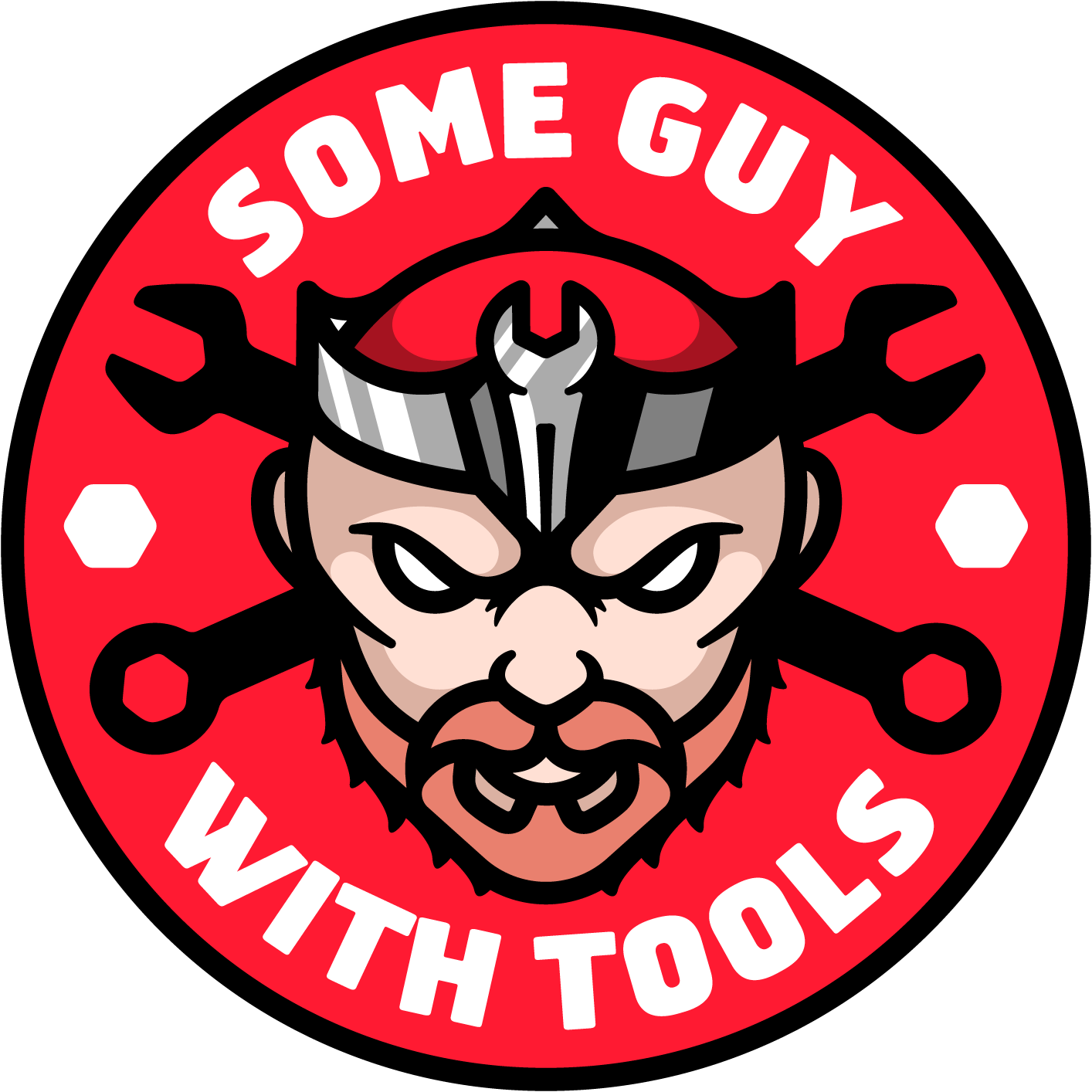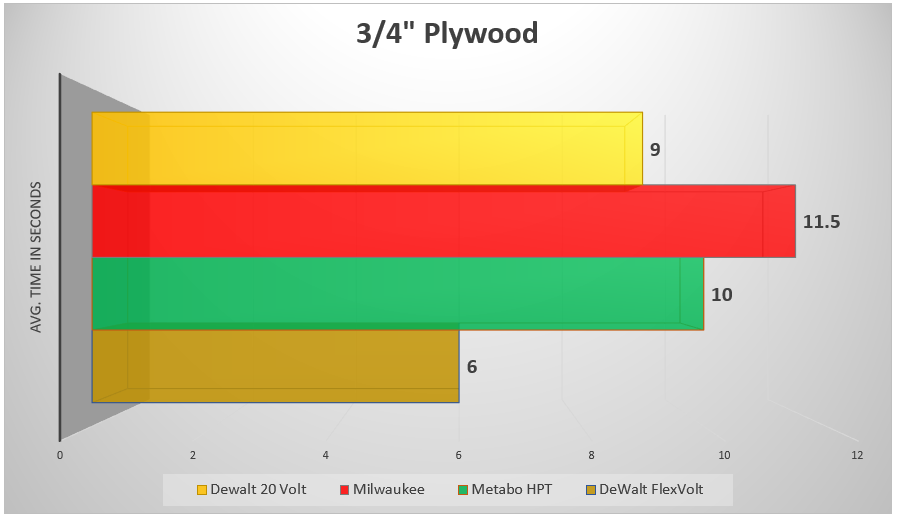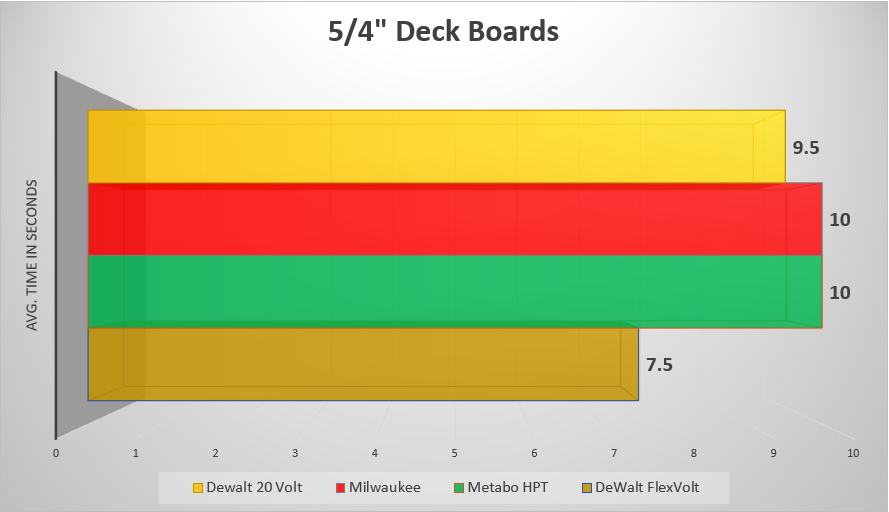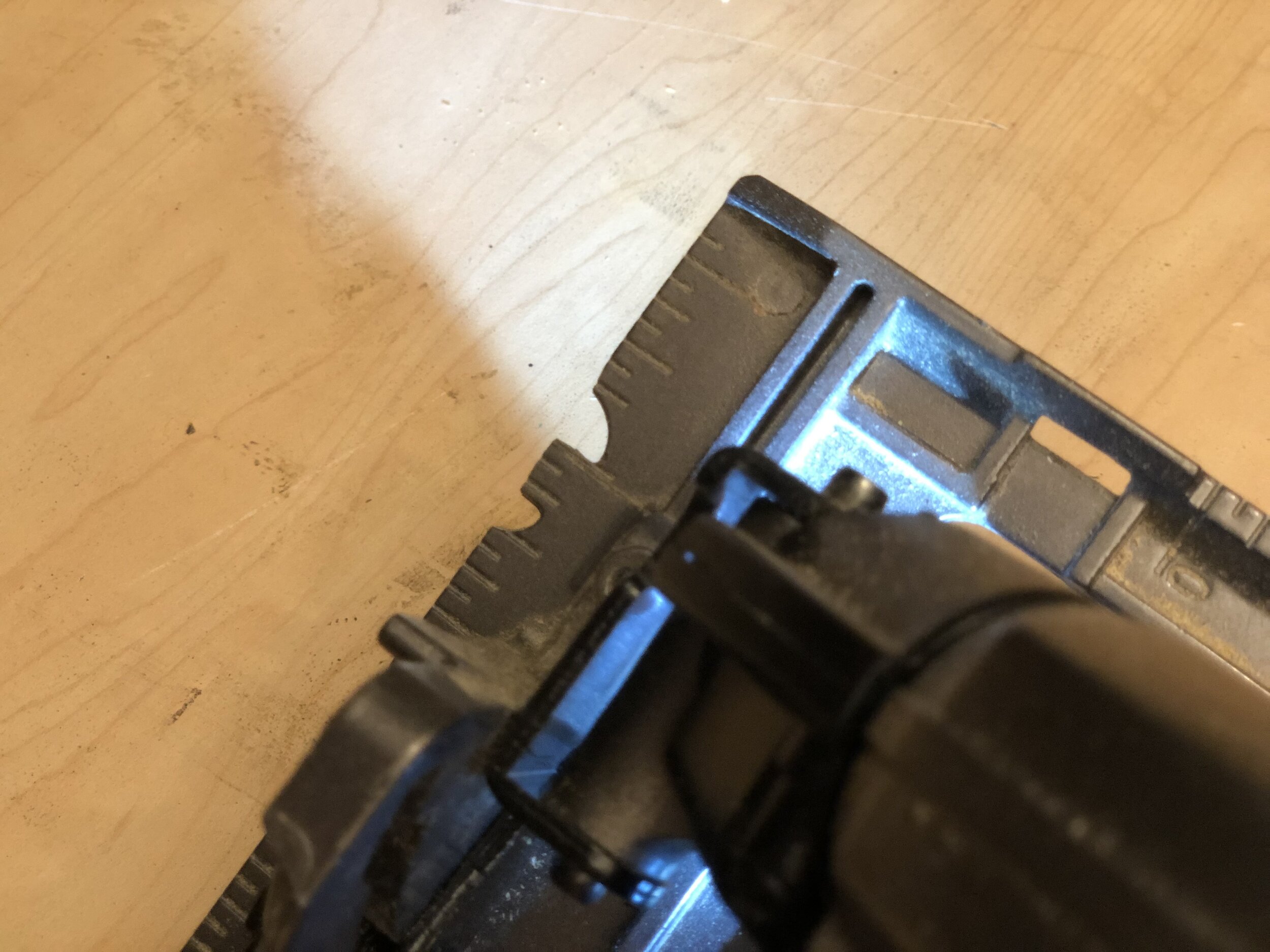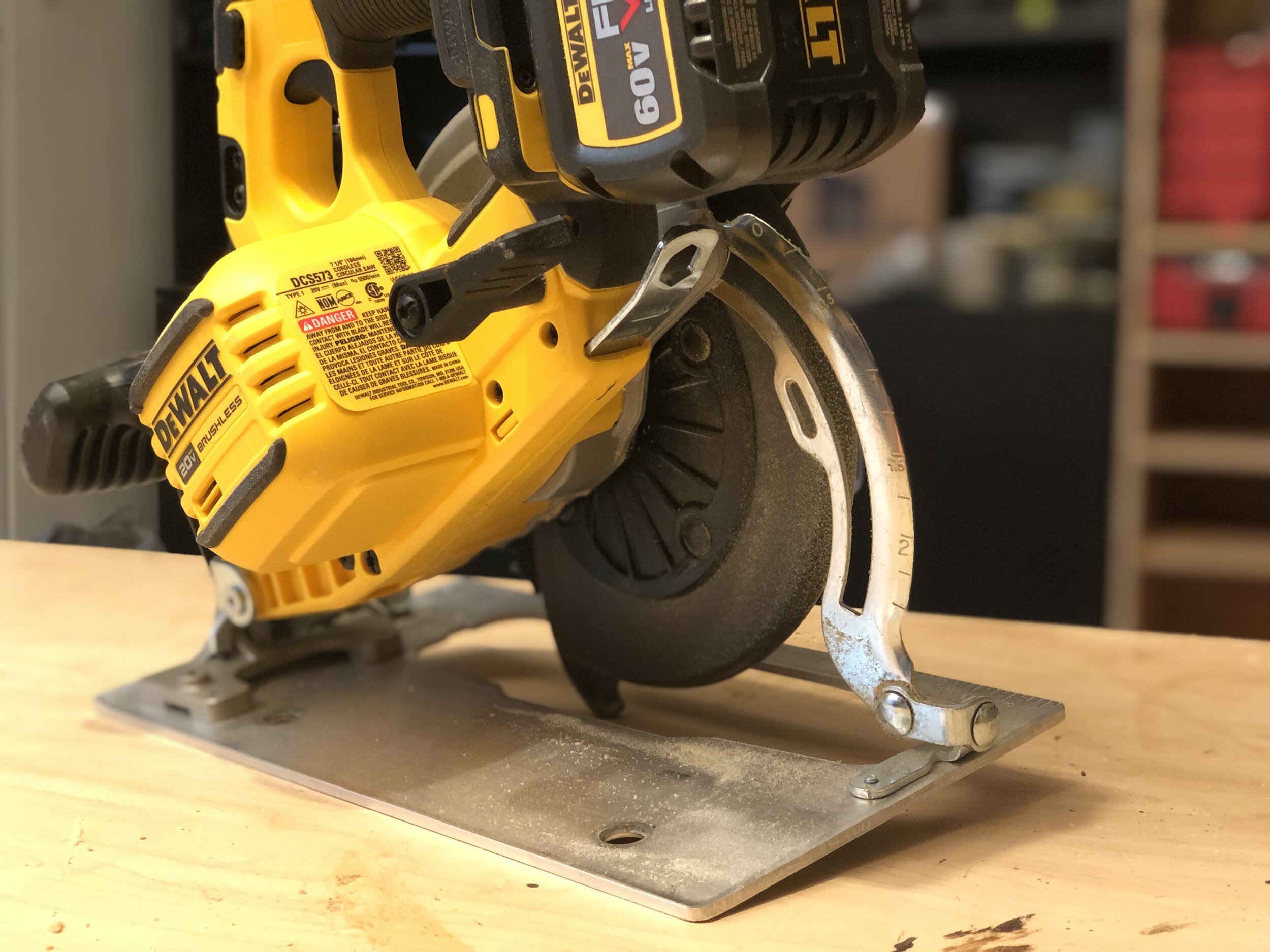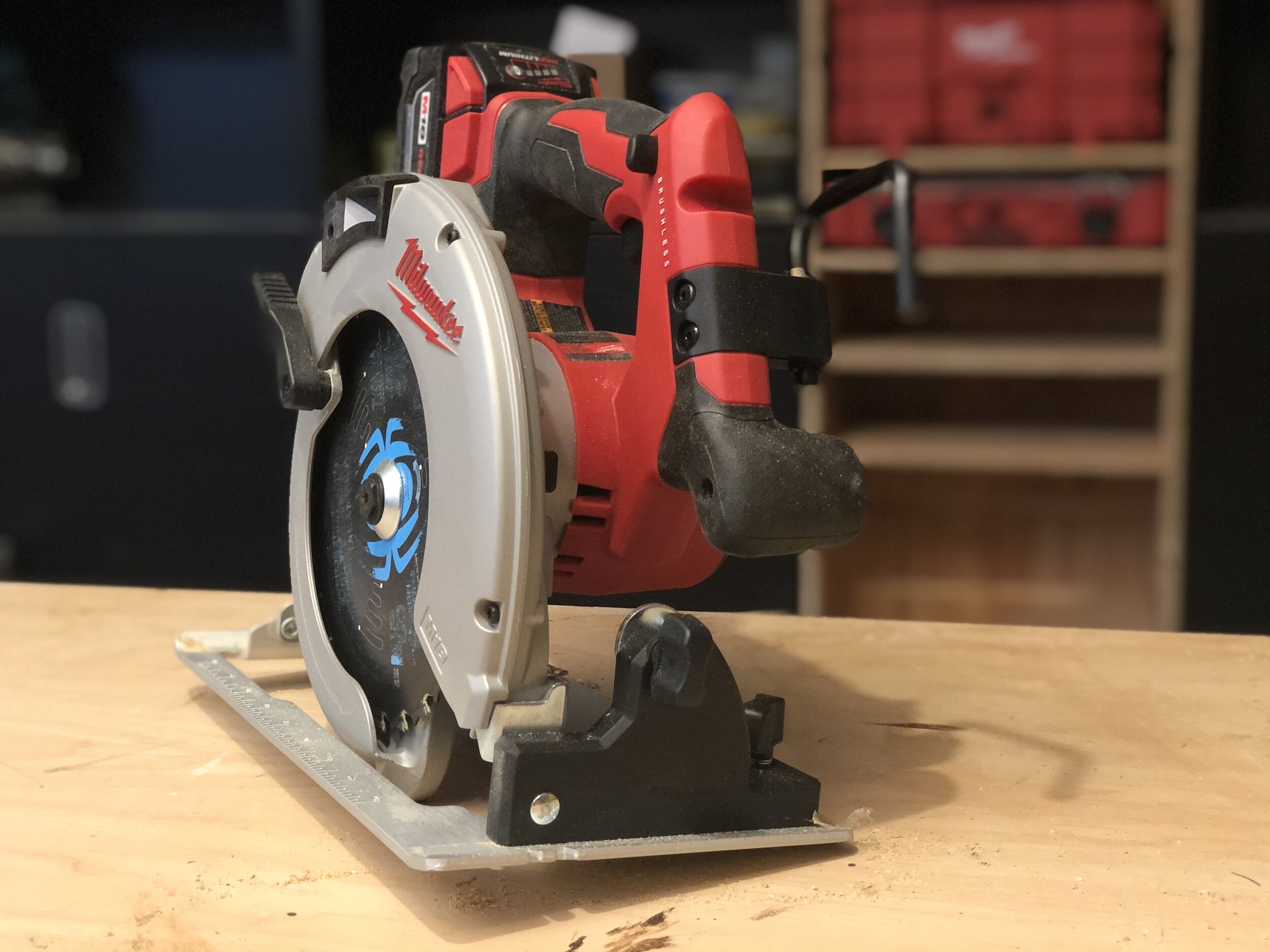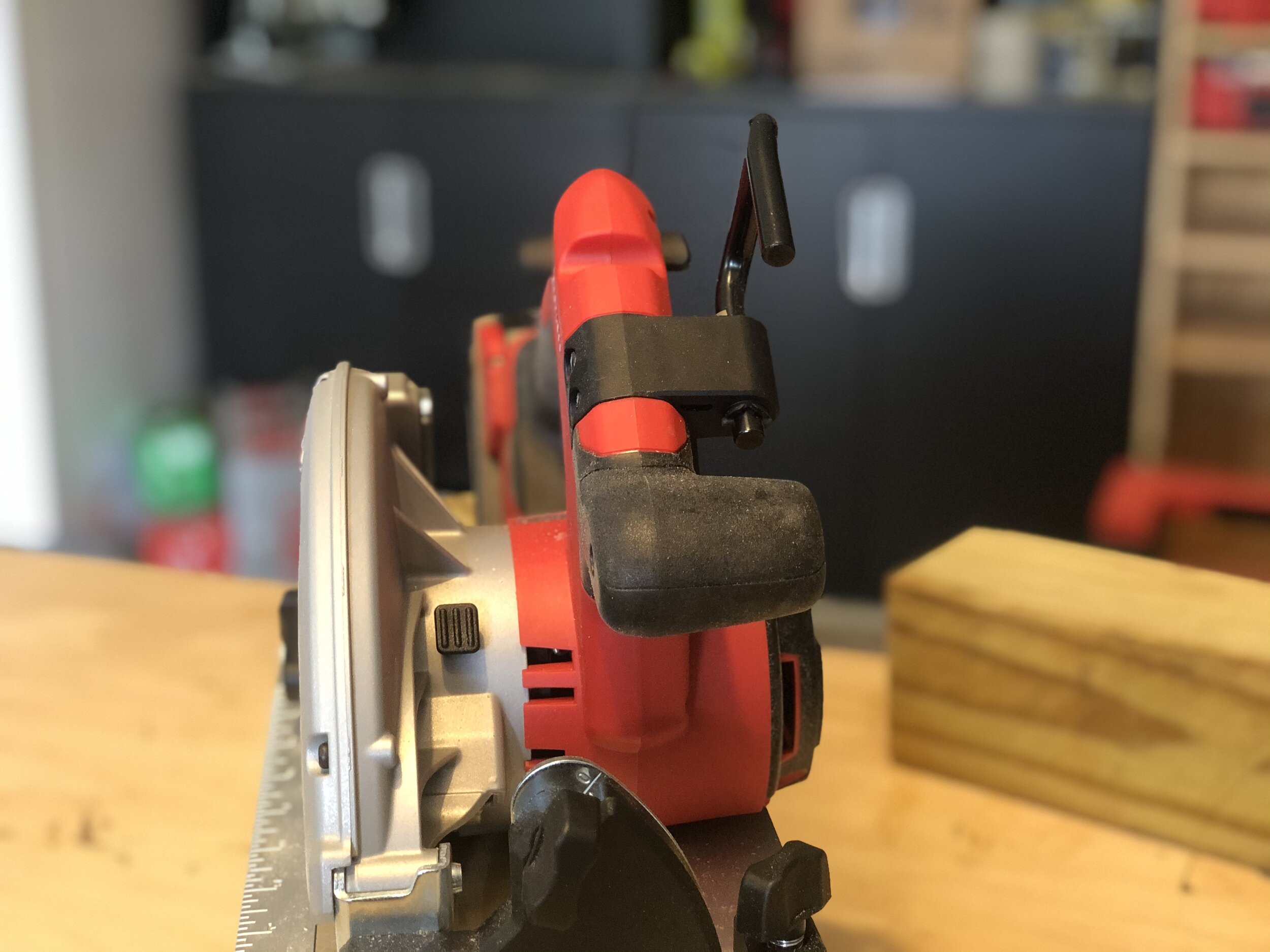7-1/4” Cordless Circular Saw Head-to-Head
Navigation
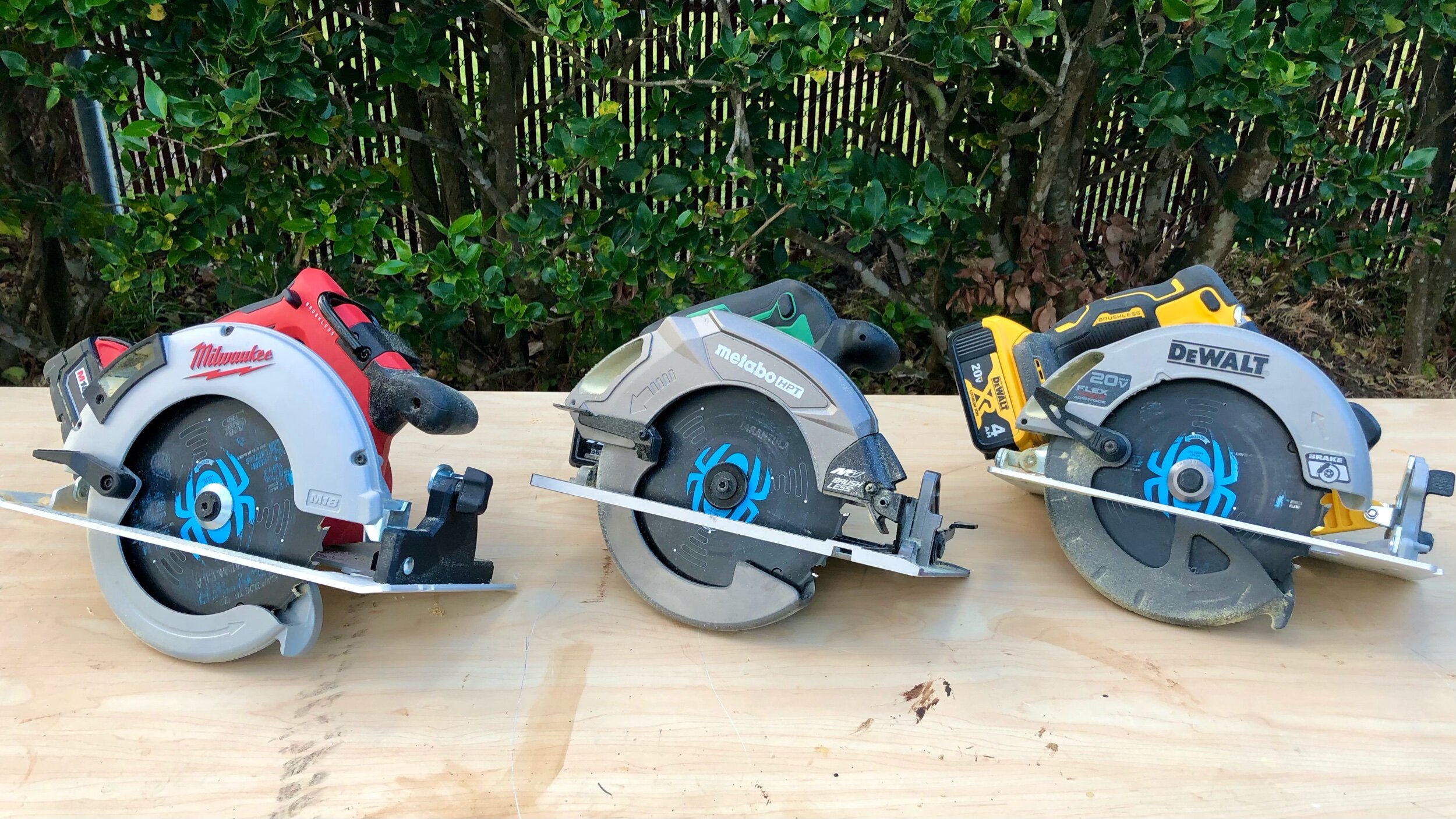
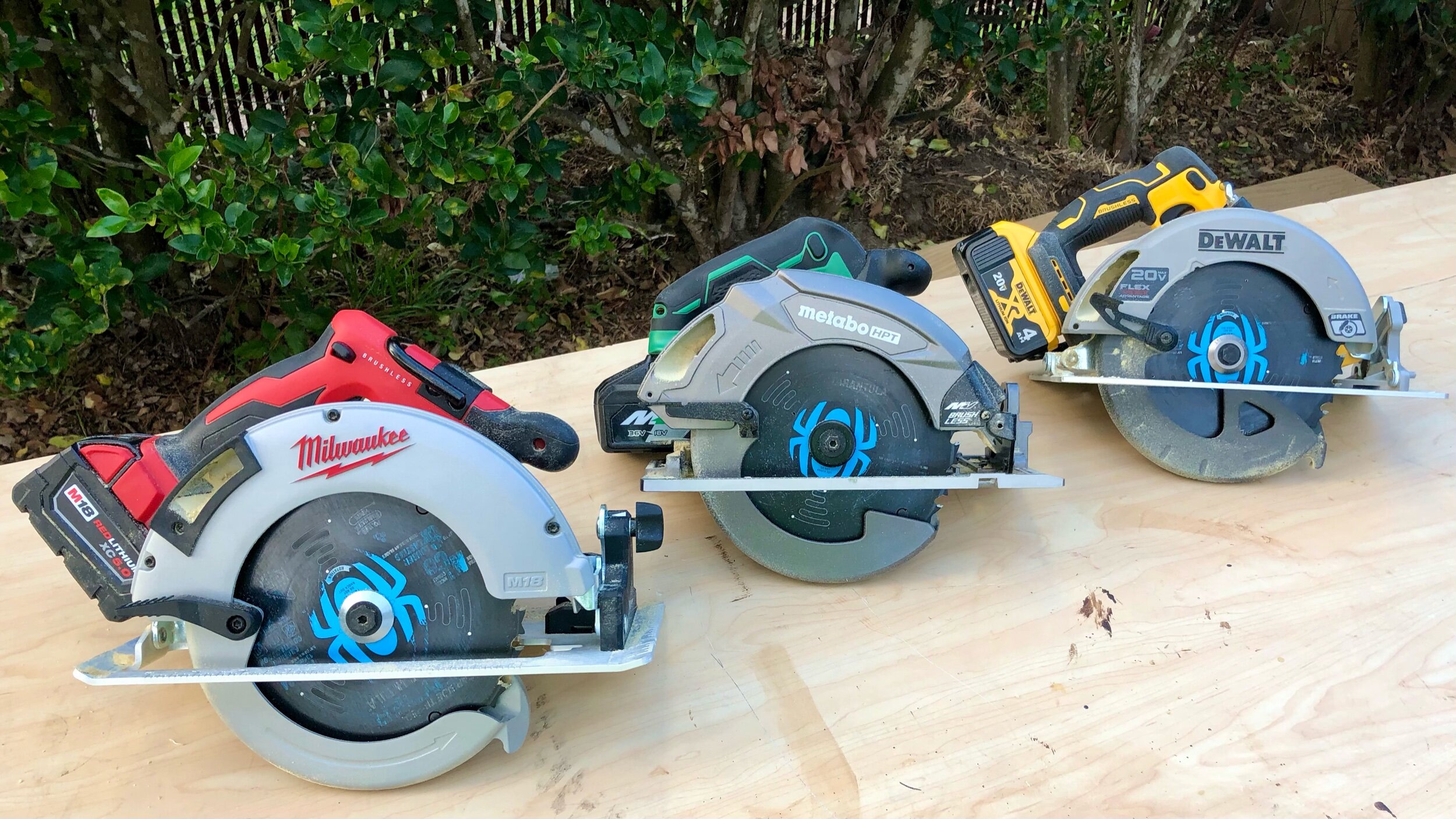
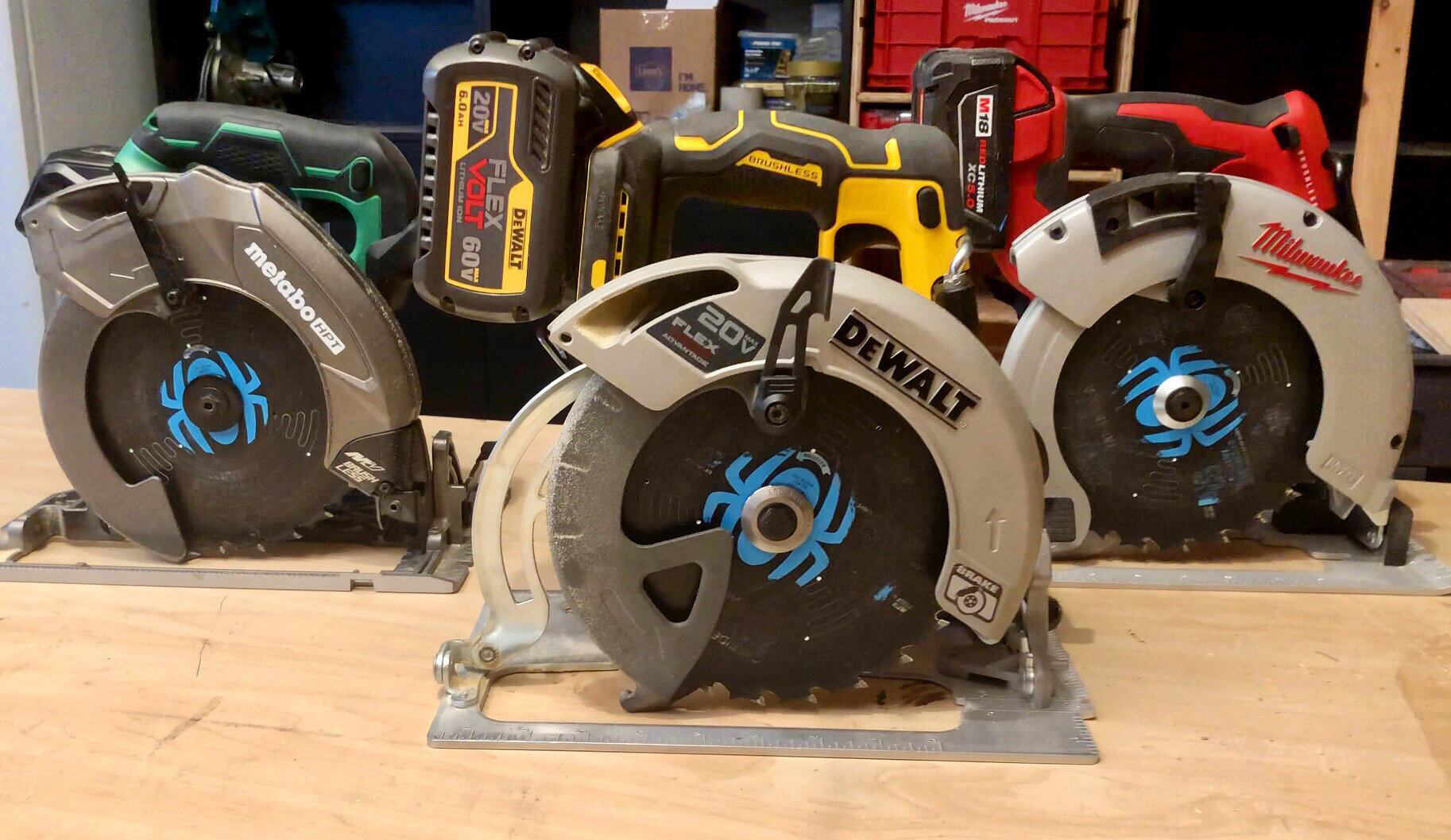
Today were going to be looking at three of the best currently available on the market, 7-1/4” sidewinder circular saws. We have the DeWalt FlexVolt Advantage (DCS573), the Milwaukee (2631-20) and the Metabo HPT MultiVolt (C3607DA).
These were all shipped with batteries and all three of them were sent to me by the manufacturers, I like to make it clear that these tools were provided for the purpose of the comparison however this does not affect the testing or rankings in any way whatsoever. I will always do my best to provide an unbiased and comprehensive test of all three of these saws, to see which one is the best pro grade circular saw.
Performance Testing
The Tests:
1) 3/4 in X 8 ft. Plywood (pulled by 10-pound weight)
2) 5/4 in Decking Boards (6 ft wide crosscut) (pulled by 10-pound weight)
3) 2x6 – 1 minute of cross-cutting
4) 4x6 rip cut – overload test (pulled by 10-pound weight)
Control Factors:
Blade - Spyder Tools provided us with multiple 24-tooth framing blades, to eliminate blade differences as a factor in the testing. Each saw will be assigned a blade, they will use that blade to perform an equal number of cuts throughout the entire test in order to keep that variable constant.
Force (Human push) - While not visible in the pictures and videos, in all the tests (with the exception of the 1-minute 2x6 cross-cutting) the saws were attached to a 10-pound weight via pulleys which pulled the saws through their cuts. I kept my hand on the saws during the cuts primarily to hold the trigger but also to guide the saws, I did not push the saws at any time.
Average of Times - Each of the tests using the weight to pull the saws are performed three times with each saw, and an average of the three test times is used as that saws final time.
Test 1 - 3/4” Plywood
This test replicates a task that the majority of professional users will perform daily. 3/4” plywood is widely used in the construction industry and it should be expected that the saw you purchase can handle the task of making cuts through plywood easily and with accuracy. Each of the three saws handled the load of the 8-foot plywood cut well. The DeWalt, when used with either battery, but especially with the FlexVolt, plowed through the material without much audible load on the motor. The Metabo HPT ran through the material with ease, and the Milwaukee was up to the task as well although it did sound a bit more taxed by the cut than the other two saws.
The DeWalt with the 20-volt battery averaged 9-seconds. Following in a close 2nd place the Metabo HPT cam in with an average of 10-seconds and in third was the Milwaukee at 11.5-seconds. When switching the DeWalt to the FlexVolt battery, it’s time decreased to only 6 seconds per cut.
Result: The 3/4” Plywood cut test goes to the DeWalt FlexVolt Advantage (DCS573) even if you run a standard battery.
Test 2 - 5/4” Decking Boards
This test is intended to simulate cutting the tails off a decking job, with uneven surfaces and somewhat thicker material this test is more work for the saws, to repeatedly end a cut through one board and immediately plunge into the next, these types of cuts can be taxing for the motors. Once again, each saw performed this test with relative ease and none showing signs of not being capable of handling the load.
Although this test’s results were much closer than the first test, the DeWalt with 20-volt battery still came out ahead by 0.5-second. At an average time of 10-seconds, the Metabo HPT and Milwaukee tied for 2nd. However once again, after switching the DeWalt to the FlexVolt battery, its average time decreased to only 7.5 seconds.
Result: The 5/4” Deck Board test goes to the DeWalt FlexVolt Advantage (DCS573) with the FlexVolt battery, otherwise it’s a very close result and all three saws would be great for daily use.
Test 3 - 2x6 1-minute Cross-cutting
This will be a one-minute test where each saw will make as many crosscuts of a 2x6 as it can within a one-minute timeframe.
Cross-cutting dimensional lumber is an all-day everyday task performed by framers and carpenters alike. Any saw produced by one of the major manufacturers should readily be able to handle these types of cuts without exception, and at the price point of these three saws, you should feel confident that they will handle it with ease.
The Metabo HPT was able to make 27 crosscuts, followed closely by the DeWalt with 20-volt battery which made 26 cuts and in third the Milwaukee made 24 crosscuts. After switching the DeWalt to the FlexVolt battery, it was able to make 34 crosscuts within the one-minute period.
Result: This timed 2x6 Cross-cutting test goes to the DeWalt FlexVolt Advantage (DCS573) with the FlexVolt battery, followed by the Metabo HPT MultiVolt (C3607DA).
Test 4 – Pressure Treated 4x6 Overload Test
This test was performed intentionally to overwork the saws. A 7-1/4” circular saw wouldn’t be the go-to tool for someone needing to rip down such large dimensional lumber (especially pressure-treated), however I wanted to test to see how well the saws would perform under an excessive load, as well as how their onboard safety’s would react to the saw being overworked.
In this test each saw performed as expected and as designed. The overload protection on each of the motors kicked in and stopped the saw from being overworked to the point of damages. All three of the saws, when pushed to their absolute limit were stopped safely and quickly by their built-in safety features. The added fact that all three saws have a motor brake allows them to come to an almost immediate stop without kick back.
With that said the DeWalt with the FlexVolt battery was able to make it the entire 96” length of the post, while with the 20-volt battery it made it 40-3/4 inches. The Metabo HPT made it 34-7/8 inches and the Milwaukee 31-1/8 inches.
Result: The DeWalt FlexVolt Advantage (DCS573) with the FlexVolt battery is the clear and definite winner of this test.
Performance Final Results
The winner of the performance category, based on the results of the performance tests, is the DeWalt FlexVolt Advantage (DCS573) with the FlexVolt battery. The added power given to the motor by the saw’s onboard electronics recognizing the FlexVolt battery pairing truly sets this saw apart. It allows the saw to “step-up” it’s game and power through even these more demanding tasks with relative ease.
Ergonomics
Weight
All three of the saws were weighed without blades and without batteries, truly bare tool. They all came in under 8 pounds, the Milwaukee and Metabo HPT closer to 7 pounds.
Balance
In my super scientific, technical and official test of the saw’s balance I hung the saw on one finger hooked around the trigger.
The Metabo HPT felt the most balanced, with no battery in place the saw was slightly nose heavy but once I attach the MultiVolt battery the saw felt very well balanced with minimal leaning forward/back or left/right.
The DeWalt and Milwaukee both feel very nose heavy without a battery installed. Obviously the size of battery you use will affect the balance, with a 4 Ah battery the DeWalt still feels a bit nose heavy, but with the 6 Ah FlexVolt battery it starts feeling much more balanced. A similar statement can be made regarding the Milwaukee, with a 5 Ah or smaller battery it is still somewhat nose heavy, putting an 8 Ah or larger battery really balanced out the saw well.
Handle Shape/Angle
Admittedly, handle shape/angle is a very subjective category. The handle shape and angle that I prefer may not be what you prefer so I will do my best to keep my opinion out of this portion. Each of the saws has a similar angle of their handles, the largest difference is that the DeWalt handle has a separated area for the users forefinger to squeeze the trigger.
Trigger Lock
The DeWalt and Metabo HPT have “push-in” style trigger locks that can be pushed from either the left or right side of the handle. The Milwaukee has a “push-down” style trigger lock that can also be pushed from either the left or right side of the handle. Both styles of trigger lock have advantages with their motions, “push-in” style are reminiscent of your standard cordless drill or impact driver, and allow you to easily push them inward as you tighten your grip, “push-down” style in my opinion feel very natural to depress with the end of my thumb in the direction I’ll be pushing the saw.
Forward Hand Grip
The saws have each taken a slightly different approach to the forward grip.
The DeWalt fore grip is the largest of the three and is the furthest forward. The Milwaukee has a smaller for grip that is also pushed forward. The Metabo HPT has a small fore grip which is much closer to the main handle than the other two saws.
Battery- Ease of Change
The DeWalt and Milwaukee saws both place the battery at a steep angle, which makes swapping the battery, regardless of the depth that the saw is set to extremely easy and straightforward. The Metabo HPT battery is at a much shallower angle, which during our testing made it noticeably more difficult to swap the battery while the saw was set to full depth, more difficult doesn’t mean impossible or intolerable it only means that compared to the other two brands’ battery angles, it is noticeably harder to swap out the Metabo HPT battery.
Visibility (Line of Sight, Notch in Shoe)
All three saws have the standard two bevel markings (0-degree bevel and 45-degree bevel) on their shoes. The Milwaukee and Metabo HPT each use a notch for both of their blade guide markings while the DeWalt uses a notch for the 45-degree guide but for the 0-degree guide the shoe is then recessed to the edge. This guide notch/recess style will all come down to user preference.
Ergonomics Final Results
The Metabo HPT has the most balanced feel, but the more difficult battery change and “cramped” feel to it’s foregrip. The Milwaukee with a larger High Output battery feels well balanced, and has a forward mounted yet small foregrip. The steep angle of the battery mount allows for easy battery swaps regardless of what depth the saw is set at. The DeWalt is well balanced with almost any battery but especially with the larger FlexVolt batteries, it has the forward mounted foregrip which is also the largest and most comfortable and the steep angle of the battery mount makes it easy to swap batteries. The separate slot for the user’s trigger/forefinger does take some getting used to though.
With all of this taken into consideration, the winner of the Ergonomics category is the DeWalt FlexVolt Advantage (DCS573).
Features
Depth Adjustment
First Place - DeWalt - Markings are on the shoe half of the depth adjustment and an arrow points to your depth, the markings are easy to read and fairly accurate.
Second Place - Milwaukee - The markings are on the saw half of the depth adjustment and the arrow is on the shoe half. Through my testing I found this setup difficult to read.
Third Place - Metabo HPT - There are no markings on the depth adjustment, you are left to eyeball your depth against your work piece.
Bevel Adjustment
First Place - DeWalt - Includes markings on both the saw half and shoe half of the bevel adjustment. There are two arrows, which correspond with each set of markings. This is the only saw included in the testing which has stops at multiple common bevel angles (22.5 and 45 degrees), and has a max bevel of 57-degrees.
Second Place - Metabo HPT - The markings are on the shoe half of the bevel adjustment and there is a metal piece attached to the saw half that denotes your angle setting. The saw has a hard stop at 45-degrees, and can pass that to go to it’s max bevel of 55-degrees.
Third Place - Milwaukee - The markings are on the saw half and the arrow is on the shoe half of the bevel adjustment. The only stop is at the saw’s maximum bevel of 55-degrees.
Blade Wrench Storage
First Place - Milwaukee - The included allen wrench is stored on the motor side of the handle, up high between the main grip and the fore grip, easy to access at any depth setting or bevel angle.
Second Place - Metabo HPT - The allen wrench is stored on the motor side, between the motor and the battery terminal. It is relatively easy to access unless set at full depth, then it can be a bit of a pain. The hex wrench slides into a slot and stores securely.
Third Place - DeWalt - While the included hex wrench is the nicest and most durable of the group, the storage location is the most difficult to get to of the three saws. The hex wrench is stored at the bottom rear of the saw, underneath the battery terminal. When the saw is set any deeper than half depth, it becomes rather difficult to quickly access the wrench.
Rafter Hook
First Place - Milwaukee - The rafter hook is the largest, and flips open away from the blade side of the saw making it the easiest to hook onto a piece of dimensional lumber.
Second Place - DeWalt - The rafter hook on this saw works well, however it is not as easy to hook onto dimensional lumber as the Milwaukee saw’s rafter hook.
Third Place - Metabo HPT - This saw does not have a rafter hook.
LED
First Place - Milwaukee - Shines the brightest out of the group, and is positioned/aimed in a way that best illuminates the work piece and the area immediately in front of the shoe.
Second Place - Metabo HPT - Another bright and well placed LED, however more of the light cast gets caught on the saw itself than it does by the Milwaukee. A great feature on this saw is the extended period of time the LED stays on after you use the saw. If you work in dark or poorly lit areas often, give this a serious look.
Third Place - DeWalt - The LED on this saw is also bright, but the positioning of it seems to have missed the mark. The majority of the light shone hits directly on the bevel adjustment at the front of the saw and doesn’t make it past. It will still illuminate your work piece, but nothing like the other two competitors.
Dust Ejection
First Place - Metabo HPT - This saw threw the sawdust the furthest and consistently discharged the highest percentage of the sawdust accumulated.
Second Place - DeWalt - Also did a great job ejected the sawdust, however did not throw it as far away from the cut line.
Third Place - Milwaukee - Nothing bad to say about the dust ejection on this saw, simply did not perform to the same standard as the other two saws.
Features Final Results
For this result, I am using a cumulative score to reach the results. Highest score wins, 3 points given for each categorical first place, 2 for second place and 1 for third place.
Milwaukee - 13 points
DeWalt - 12 points
Metabo HPT - 11 points
A very close race, however the Milwaukee comes out on top with a cumulative score of 13 points in the Features category.
Final Results
Performance
First Place - DeWalt FlexVolt Advantage (DCS573)
Second Place - Metabo HPT MultiVolt (C3607DA)
Third Place - Milwaukee (2631-20)
Ergonomics
First Place - DeWalt FlexVolt Advantage (DCS573)
Second Place - Milwaukee (2631-20)
Third Place - Metabo HPT MultiVolt (C3607DA)
Features
First Place - Milwaukee (2631-20)
Second Place -DeWalt FlexVolt Advantage (DCS573)
Third Place - Metabo HPT MultiVolt (C3607DA)
Winner - DeWalt FlexVolt Advantage (DCS573)
Pricing
As of writing this, you can pick up each tool for:
DeWalt FlexVolt Advantage (DCS573)
Bare Tool - $199.00
Metabo HPT MultiVolt (C3607DA)
Bare Tool - $159.00
Kit (including MultiVolt battery 4.0Ah @ 36V/8.0Ah @ 18V and charger) - $328.00
Milwaukee (2631-20)
Bare Tool - $179.00
Kit (including (1) 5.0Ah battery and charger) - $279.00
